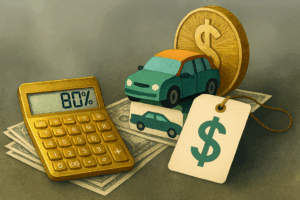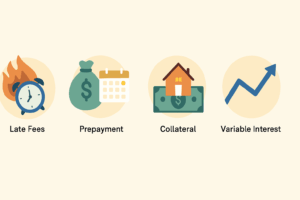Buying a car is exciting, but before you sign any paperwork or fall in love with a model, there is one important step that should come first. That step is building a solid car loan budget. A good budget helps you avoid surprises, stay within your means, and make confident decisions from the beginning.
Here is how to break down the process in a simple, practical way.
Know Your Monthly Limit
Before thinking about which car to buy, figure out how much you can comfortably afford to spend each month. Experts often suggest that all car-related costs should be no more than 15 percent of your take-home pay.
This includes your loan payment, insurance, gas, and basic maintenance. To find a good number, start with your monthly income after taxes. Then subtract regular expenses like rent, groceries, and savings goals. The amount that is left is what you can work with.
Be honest. A budget is not about pushing limits. It is about knowing what will still feel manageable three years from now.
Factor In the True Cost of Ownership
Monthly loan payments are just one part of the bigger financial picture. Car ownership includes recurring and hidden costs that catch people off guard.
Make room in your budget for:
- Car insurance premiums
- Fuel costs
- Routine maintenance like oil changes and brake pads
- Repairs or part replacements
- Annual registration and inspection fees
- Parking or tolls if applicable
These costs vary depending on the car you choose. Fuel-efficient vehicles and reliable brands tend to lower your overall spending. Use online ownership calculators to estimate based on the specific make and model you are eyeing.
Decide How Much You Can Put Down
The down payment plays a big role in shaping your loan. The more you pay upfront, the less you borrow. That lowers your monthly payment, reduces total interest, and may qualify you for better loan terms.
Aim for at least 10 percent down. If possible, 20 percent is even better. It also helps you avoid being upside down on your loan, where you owe more than the car is worth.
Not ready to put that much down? Hold off for another month or two while saving. A strong down payment upfront often saves much more down the road.
Estimate Loan Amount and Term
Once you have a monthly payment target and know your down payment, you can reverse-engineer your ideal loan amount. Many online calculators let you plug in monthly payments, interest rates, and term lengths to see what works.
Let us say your budget is 350 dollars a month. With a 5 percent interest rate and a 60-month term, your loan amount should stay under 18,500 dollars. If you choose a 36-month term instead, that number drops to around 12,000 dollars. Play around with the numbers until you find a balance that feels smart and realistic.
Shorter loan terms save on interest but raise the payment. Longer terms are easier each month but cost more over time. Choose the one that fits both your wallet and your long-term goals.
Get Pre Approved
Before visiting a dealer, get pre approved through a lender or bank. This step helps you see what interest rate and loan terms you qualify for based on your credit profile.
A pre approval does not lock you into anything. It simply gives you a financial blueprint so you can shop with confidence. It also makes it easier to say no to dealership financing if it does not match what you already have.
Bring the pre approval with you during shopping. Sellers take you more seriously when they know you are already qualified.
Plan for the Unexpected
Life happens. Build in a safety cushion within your car loan budget for surprise expenses. Maybe your insurance quote comes back higher than expected. Or the car you want is slightly more expensive than you planned for.
Having room in your budget protects you from getting stuck or overcommitted. It also gives you peace of mind that you are ready for whatever the process throws your way.
Creating a car loan budget is not about limiting your options. It is about giving yourself clarity and control. When you know exactly what you can afford and where every dollar is going, you are in charge of your purchase—not the other way around.
Take your time, do the math, and check your numbers from every angle. That way, when the right car comes along, you will be ready not just to buy it, but to own it with confidence.




